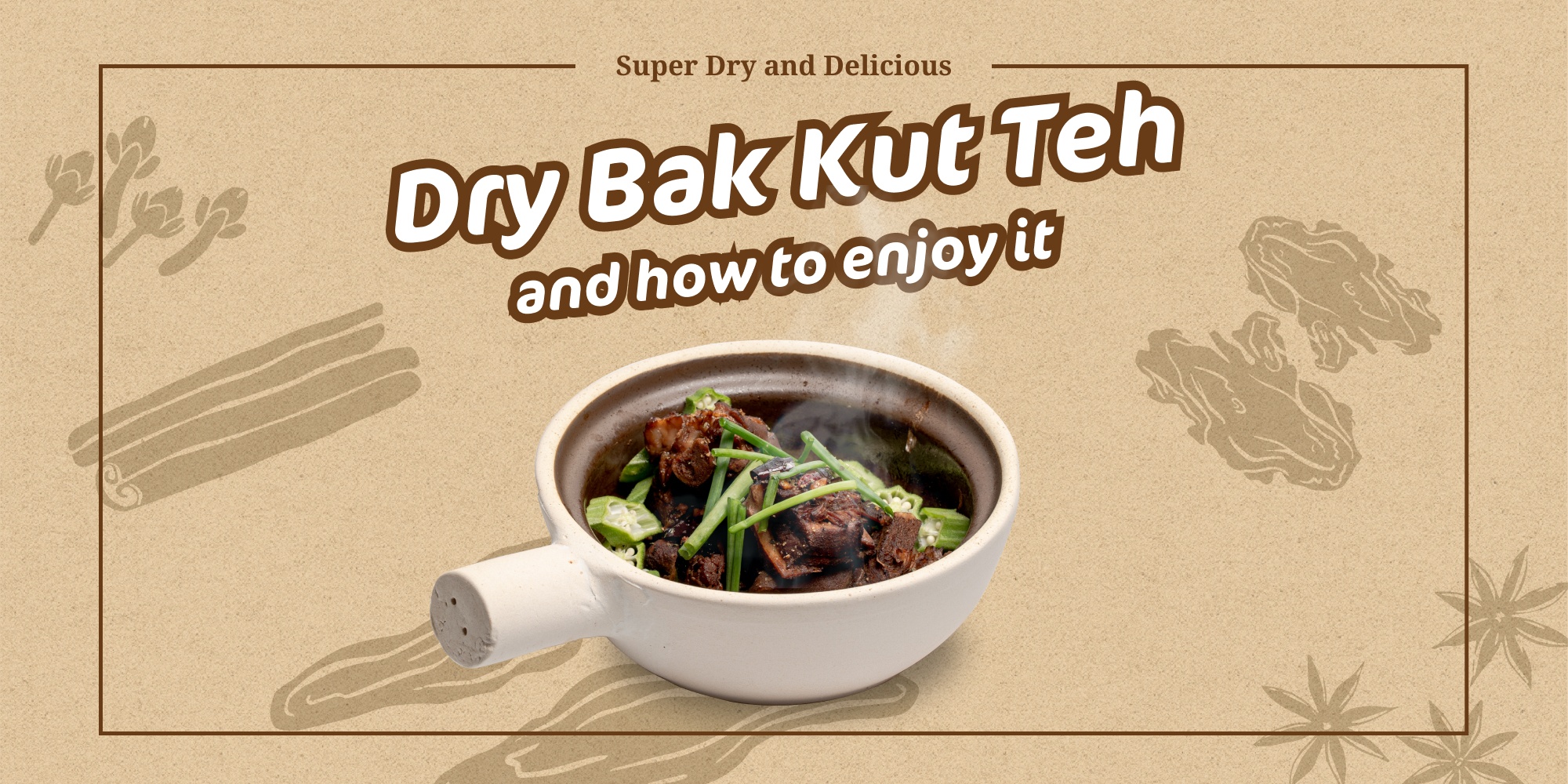Meaty pork with bones in a herbal broth, also known by its dialect name “Bak Kut Teh”, or colloquially called by its abbreviation BKT, is a popular comfort food all around Malaysia, originating from Klang.
While its true origins aren’t clearly known, rumours have it that it was brought over to Southeast Asia from Fujian province in China in the 1940s by a man named Lee Boon Teh. This man was said to have started off with a street stall at the intersection of Klang train station and Klang South police station, selling just this one dish.
In the beginning, the dish was just named “bak kut”, which literally means meat pork bones, referring mainly to pork ribs. For convenience sake, patrons slowly referred to it as “Bak Kut Teh” instead, making the man synonymous with the delicious dish he prepared and served.
Over time, stall owners started evolving the Bak Kut Teh to differentiate themselves from one another. The differentiation could be through the ingredients, spices and recipes used or a different style of cooking method. As the dish increasingly became popular, different clans had their own interpretations of it. The Hokkiens would use dark soy sauce, resulting in the darker colour of the soup base, while the Teochew focused on using large amounts of pepper, thus the paler looking and spicier soup.
And then there is a particular version that popped up and grew in popularity among diners around Klang, and that is the dry Bak Kut Teh.
Pork ribs soup, but make it dry!
Around 1996, another Hokkien interpretation of Bak Kut Teh made its appearance. And that’s what we now famously call the dry version of Bak Kut Teh.
The dry version features a completely different flavour profile as compared to the more traditional soup version. It is being cooked with different ingredients, namely okra (or lady’s finger), dried chillies, and dried cuttlefish, which gives it a sharper and tangier taste.
In order to cook the dry version, the pork ribs (long ribs have more lean meat, while short spare ribs have a better distribution of fats) are cooked in a herbal broth and simmered till the soup is completely absorbed by the ribs.
Then, the ribs are further stir-fried with seasonings and braised briefly until all the flavours are immersed. It’s an additional step to the usual Bak Kut Teh, but for those desiring a different twist to the soupy version, this dry one makes a good alternative. It has an added layer of wok-hei, and a distinct sweet-savouriness that’s loved by many.
Perfect Accompaniment to Almost Anything
And of course, it is a perfect fit for white rice as a companion, where the dry Bak Kut Teh has its perks, especially when the weather is warm, and peppery hot soup might not make an ideal food choice.
If you prefer to have youtiao like you do with the soup version, glad to say, the dry version has a nice saucy dip that’s really delicious with the Chinese fried dough.
For true comfort food, go for Fried Porridge, another popular dish from Klang, Malaysia, that’s also complicated to prepare, with additional steps of frying rice congee to bring out the wok-hei, very much like how dry Bak Kut Teh is cooked.
Another carbs option that you should consider, is fried mee sua (wheat or flour vermicelli), a traditional dish that makes a great match with the dry Bak Kut Teh, especially when you drizzle the dark coloured sauce of the dish over the lightly fried vermicelli noodles.
Herbal Soup or Deliciously Dry? Your Choice!
Now, looking to indulge in a perfect claypot of Dry Bak Kut Teh? Or a bowl of fragrant herbal Bak Kut Teh? Just head down to Feng Xiang, where you can get both the Bak Kut Tehs, and many other great tasting street food from Klang!
All prepared according to heritage recipes passed down through generations, feast on dry bak kut teh and herbal bak kut teh Singapore, or opt for an equally flavourful braised pork trotter, vinegar pork trotter, fried mee sua and more!
Find Feng Xiang at these locations:
- Fernvale Hawker Centre & CC (nearest MRT station: Sengkang)
- Food Republic @ BreadTalk iHQ (nearest MRT station: Tai Seng)
- Food Republic @ VivoCity (nearest MRT station: HarbourFront)
- Food Republic @ Parkway Parade (nearest MRT station: Dakota)
- Kopitiam @ AMK Hub (nearest MRT station: Ang Mo Kio)
- Kopitiam Food Hall @ JEM (nearest MRT station: Jurong East)
- Kopitiam @ Northpoint City (nearest MRT station: Yishun)
- Lau Pa Sat (nearest MRT station: Downtown)
- Senja Hawker Centre (nearest MRT station: Bukit Panjang)
You may also enjoy the dishes in the comfort of your own home, through the popular food delivery apps.

